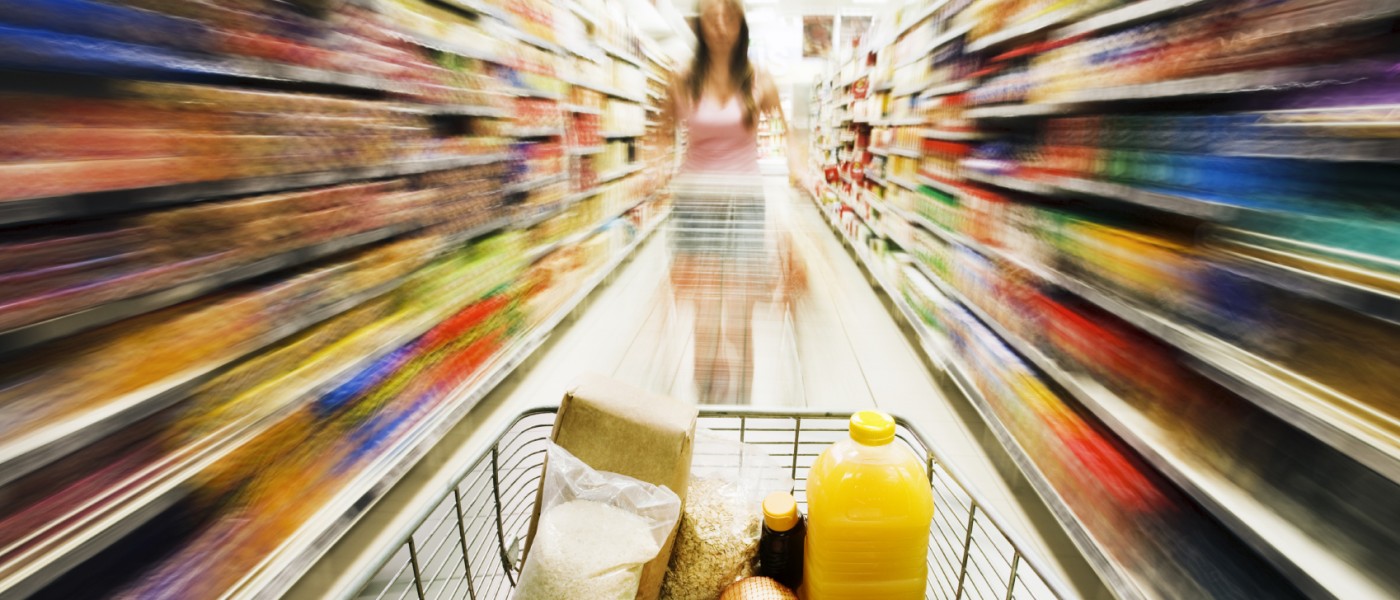February 2010
Hey Farm Aid,
I read your column on concentration in agriculture last month, but I’m confused. You talk about monopolies and fewer consumer choices, but when I walk into a supermarket, I see a gazillion brands and products. I don’t understand how concentration is actually hurting consumers.
Any help clarifying would be great,
Thanks!
Stephen
Spokane, WA
This is a great question, Stephen. You’re highlighting a profoundly puzzling paradox: how can a food system that offers so much variety be constricting consumer choice?
For sure, when you walk into your supermarket, you and every other consumer are bombarded with thousands of brand names and products vying for your attention. As shoppers, our dilemma feels more like “How could I ever choose?” rather than, “What happened to my right to choose?” It’s exhausting.
But those thousands of brands are something of an illusion. Concentration in our food system, as I discussed in last month’s column, has been restricting, not expanding, our choice as consumers.
All right, Stephen, I’m rolling up my sleeves. Let’s dig into this a little deeper.
Choice in the Cereal Aisle?
You know the image. Stroll down the cereal aisle and you’ll see every flavor and variety known to humankind: from loops of fruit to clusters of oats and honey, from peanut to chocolate to strawberry to berry berry, your breakfast choices are thrillingly limitless. Right?
Well, not so fast. While we may have a seeming cornucopia of fruity flavors and shapes of flakes to choose from there are really just a few companies who own all the brands you see and who make almost all of the decisions about the food we eat and how it is grown. The illusion of choice covers up a very dangerous reality: never before in history have we had just a handful of mammoth companies controlling every step of our food system from farm to your cereal aisle!
Lift the Veil
Among the more troubling aspects of the thousands of “options” presented at the grocery store is that they really boil down to just few raw materials: corn and soy.
Whether as corn-based sweeteners, like high fructose corn syrup, or as a major component of animal feed, and even in your can of Cheez Whiz or bottle of beer, corn is ubiquitous in our food supply. The same is true for soybeans, which processors crank out as a plethora of food additives like soybean oils and lecithin, which we eat everyday in processed foods.
One reason these two characters end up everywhere is because they’re incredibly cheap. Thanks to a series of farm policies, farmers have been encouraged to produce loads of corn and soy while the prices they receive have often dropped far below the cost of production. While this is bad for farmers, it’s turned out to be a pretty cool deal for the factory farms, and soft drink and snack makers who use all this cheap, excess product as inputs for mass-produced meat and processed food. As a result, the relative cheapness of these foods help manufacturers set retail prices below those of otherwise-competitive, healthier alternatives, further constraining our access to better options.
What’s more, the supply of these raw goods is under the tight control of just a few companies. According to USDA’s most recent data, 85% of all corn and 91% of all soy grown in the U.S. is from genetically engineered (GE) seed under the control of just one company, Monsanto. This reliance on so few seed varieties has seriously eroded the genetic diversity of these crops, presenting a complete lack of choice for farmers who could benefit from varieties suited to their local geography and climate. This is to say nothing of the dangers genetic erosion presents for the resiliency of our food supply. Dominance in the seed sector has also afforded companies enough market power to inflate seed costs to farmers. For us consumers, whether or not we want to eat foods containing genetically-engineered ingredients, we have few alternatives and no labels to tell us which products contain them. The Farmer to Farmer Campaign on Genetic Engineering, a Farm Aid-funded organization, recently released a report that covers this predicament in great detail and is worth a deeper look.
Show me the money
People talk about voting with your dollar, but as a conscious consumer, how do you know where you’re placing your vote?
The concentration of market power in the food sector has left more of your dollar in the hands of corporations, with just pennies left for our farmers. Over the past few decades, the farm’s share of the dollar you spend at the checkout, sometimes referred to as the food retail dollar, has plummeted. In bad years, it can be so low that droves of farmers leave the land for good. In 1998, this happened in the hog industry. Only $0.12 of every dollar spent on pork in the grocery store went to a hog producer—75% below their share in 1970.
Today, we see the same crisis in the dairy sector, where prices paid to farmers have taken a dive in the past year. But in both the case of pork and dairy, consumers didn’t benefit at all—retail prices stayed the same or even increased. Because of their market power, giant processors and retailers have no incentive to pass savings from the farm gate onto consumers. The result? Consumers pay more and farmers get less.
In short: Behind all that supposed supermarket variety is just a handful of companies who not only decide what we eat and how it’s grown, but also dictate the prices farmers receive and what we pay in the aisle.
Raise Your Fork!
As a result of all this lack of choice, we’re not getting what we need. Today, the USDA reports that the average American falls painfully short of getting recommended servings of fruits, vegetables, whole grains and dairy products. The prevalence of ailments like obesity, type 2 diabetes, and chronic heart disease are mere symptoms of our flawed food system.
It is often stated that industrial production is the only system that can provide consumers with the food choices they desire. But the dominance of just a few companies limits our ability to understand the origins of the products we choose and places a number of barriers to choosing alternatives, such as those that are locally-grown, family-farm identified, organic, hormone- or antibiotic-free, GE-free, and so forth.
Agriculture is by its nature different than other markets. Farmers produce food that is meant to nourish our bodies. They are stewards of our land, pillars of our economy, and carry a cultural heritage cherished in America. We deserve markets that reflect the complex set of needs and services fulfilled by farmers. Farmers deserve markets that give them a fair shake.
With upcoming U.S. Department of Agriculture and Department of Justice joint workshops planned to investigate concentration and antitrust issues in agricultural markets, we have unprecedented opportunities to raise awareness of the erosion of choice in our food system and the many implications for consumers and farmers alike. I invite you to join us in the fight to make sure these workshops seriously tackle corporate control of our food system and, in turn, move us toward a real cornucopia of good food options in the grocery aisle.


